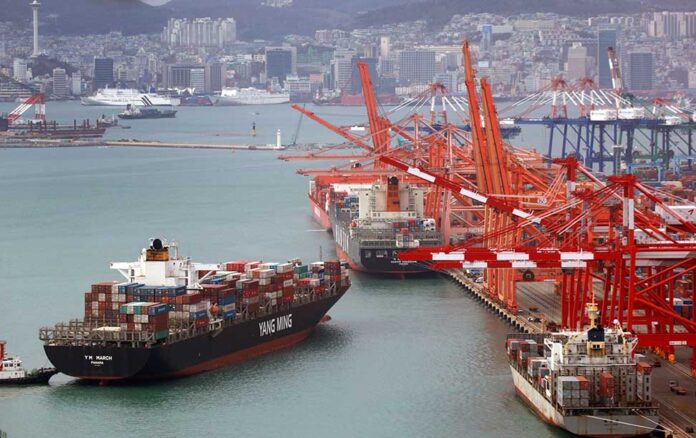KARACHI: Pakistan’s exports during the last decade remain sporadic and unsustainable as compared with the peer countries such as India and China, which fared better than Pakistan.
The State Bank of Pakistan (SBP) said this in its annual report on the State of Pakistan’s Economy released this week.
The State Bank said Pakistan had faced a balance of payments crisis, as those countries had not faced such issues. “As per [the] World Integrated Trade Solutions, between CY10/19, Pakistan’s exports have risen by mere $2 billion, whereas, for India and China, the absolute changes amount to $103 billion and $921 billion, respectively. In the same period, Pakistan’s exports averaged $23 billion, while India and China averaged $293 billion and $2.2 trillion, respectively.”
In terms of GDP, in 2019, exports of Pakistan, India and China were around 9 percent, 11 percent and 17 percent, respectively. Already paltry, Pakistan’s share in the world exports declined from 0.13 percent in CY10 to 0.12 percent in CY19. India’s global share increased from 1.31 percent to 1.57 percent; and China’s from 9.37 percent to 12.17 percent.
“Based on several studies, we briefly summarise four main reasons as to why exports of Pakistan have not risen sustainably,” the SBP said. Further, at HS-6 level, Pakistan’s lack of product diversification is also reflected in the fact that its top 50 export products (in terms of USD value in 2019) occupy around 63 per cent of the total exports. Whereas, in the case of India and China, top 50 products account for around 49 per cent and 38 per cent, respectively.
The market diversification leads to new opportunities of higher and more sustainable earnings, while making the exporting firms less vulnerable to market-specific demand fluctuations. Pakistan’s export destinations are far less diverse than India and China. To understand the gap, first consider World Integrated Trade Solutions’ regionalisation of the world, it said.
In 2019, Pakistan’s average number of HS 6-digit products shipped to all these regions was 47 percent of the total 2,824 products. In contrast, India’s and China’s averages were 87 percent and 90 percent, respectively, of a little over 4,400 products in each case.
According to the Global Value Chain Development Report 2019, more than two-thirds of the global trade channels through global value chains (GVCs), wherein production crosses at least one border, and usually many borders, before final assembly. GVCs help accelerate growth in export through two channels; backward participation or integration, where a country imports intermediary goods to produce and export products where it may have competitive advantage. For example, Bangladesh imports cotton fibre and yarn to make and export cotton-based apparel forward participation, where a country exports intermediary goods because it does not have the competitive advantage in making the related finished products.
Pakistan’s GVC participation, which is a sum of backward and forward participation, has been behind that of India and China for the better part of the time period since 1990. Although its participation has converged in the post-2007 crisis period, it is still lagging.
The SBP said that Pakistan is still not deeply integrated into GVCs because of two major reasons. One, the country’s exports are concentrated in low value-added products and primary commodities, which generally do not require imported inputs. Two, Pakistan’s tariffs on intermediate goods are four times the World Bank, while analysing, Pakistan’s textile and apparel exports noted that the exporters are depended on low-quality cotton input, leading to the lack of integration in the global textile and apparel value chain.






















